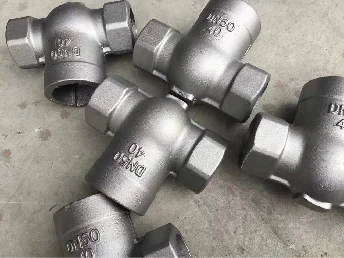Exploring the Advantages of Metal Sand Casting
Metal sand casting is a widely used manufacturing process that offers significant advantages for producing complex metal parts. This technique involves pouring molten metal into a sand mold, allowing it to solidify and create the desired shape. Due to its versatility and cost-effectiveness, sand casting has become a preferred choice across various industries, including automotive, aerospace, and machinery.
One of the primary benefits of metal sand casting is its ability to create intricate designs. Unlike other manufacturing methods that may require extensive tooling, sand casting can accommodate complex geometries without significant modifications. This flexibility allows engineers to design parts with detailed features, such as internal passages or fine surface details, which would be challenging to achieve with traditional machining techniques. As a result, sand casting is often the go-to method for producing prototype components and small to medium-sized production runs.
Another significant advantage of this process is the materials compatibility. Metal sand casting can be used with various alloys, including aluminum, bronze, iron, and steel. This versatility enables manufacturers to select materials based on specific mechanical properties, such as strength, conductivity, or corrosion resistance, tailored to the application's requirements. Furthermore, the ability to cast different metal types in a single mold enhances design flexibility and can reduce overall production costs.
metal sand casting

Cost-effectiveness is another crucial reason for the popularity of metal sand casting. The materials used for sand molds, primarily sand and binders, are relatively inexpensive compared to those required for other processes like die casting. Additionally, the tooling costs associated with sand casting are lower because the mold itself can be created quickly and easily, reducing the lead time for production. For businesses looking to minimize expenses without compromising on quality, metal sand casting offers a compelling solution.
The sand casting process also supports sustainability. Being a relatively low-energy process compared to other manufacturing techniques, metal sand casting generates fewer carbon emissions. Furthermore, the sand used in casting can often be reclaimed and reused, which reduces waste and contributes to a more sustainable manufacturing ecosystem. In response to growing environmental concerns, many foundries are investing in sand reclamation systems to enhance sustainability further and minimize their ecological footprint.
However, it’s also essential to acknowledge some challenges associated with metal sand casting. The surface finish of cast parts may not be as smooth as those produced through machining, often requiring additional finishing processes to achieve the desired quality. Additionally, the process can be sensitive to variations in temperature, which can lead to defects such as porosity or inconsistent wall thickness.
In conclusion, metal sand casting is a valuable method for producing a wide range of metal components, offering benefits such as design flexibility, material diversity, cost-effectiveness, and sustainability. Despite its challenges, the advantages make it an attractive choice for manufacturers aiming to produce high-quality parts in an efficient manner. As technology advances, the sand casting process will likely continue to evolve, further solidifying its place in modern manufacturing.
Post time:ಸೆಪ್ಟೆಂ . 09, 2024 06:09
Next:youtube sand casting
